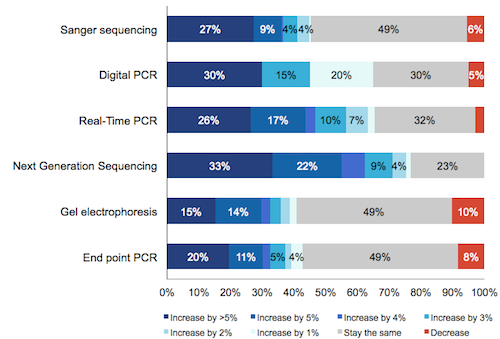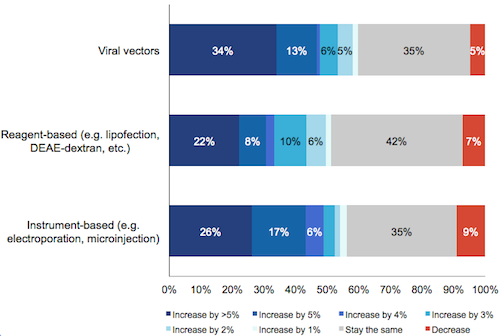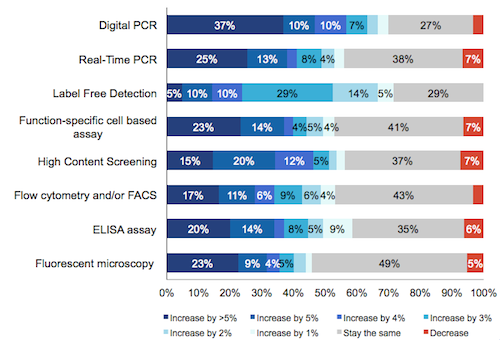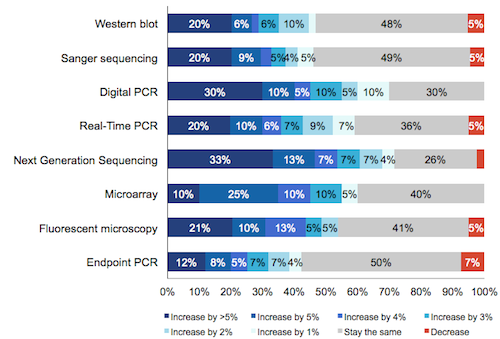Part II: CRISPR’s impact on current tools/techniques
Diving into Part II of the CRISPR Workflow series, we are exploring how our panel believes feel that current tools, techniques and methods will be impacted due to the emergence of CRISPR technology in their labs. We know that while many of our clients are seeking preeminence in newly formed product lines for CRISPR/Cas9 kits and consumables, the ripple-effect of CRISPR’s rise may be felt in more mature applications that are used for validation in the CRISPR/Cas9 workflow.
Within the same questionnaire that was examined in Part I of our series, we asked our respondents (N=316) to estimate how their usage of common tools, techniques, and methods might change as a result of their use of CRISPR/Cas9 technology, specifically:
How do you expect your use of the following techniques used to confirm your CRISPR construct to change as a result of your use of CRISPR/Cas9 technology? (Choose only one for each)
How do you expect your use of the following methods used to introduce CRISPR/Cas9 constructs into target cells to change as a result of your use of CRISPR/Cas9 technology? (Choose only one for each)
How do you expect your use of the following techniques used to successfully alter target cells to change as a result of your use of CRISPR/Cas9 technology? (Choose only one for each)
How do you expect your use of the following techniques used to confirm mutations in DNA to change as a result of your use of CRISPR/Cas9 technology? (Choose only one for each)
Conclusion: While certainly not surprising, next generation sequencing is the technique most widely predicted to increase as a result of CRISPR/Cas9 technology in the respondents’ labs.
The full report and raw data for the CRISPR Workflow series is available to our CRISPR IMI clients. For more information on gaining access to the full suite of CRISPR reports, please contact Zach French at [email protected] or 703-778-3080.









